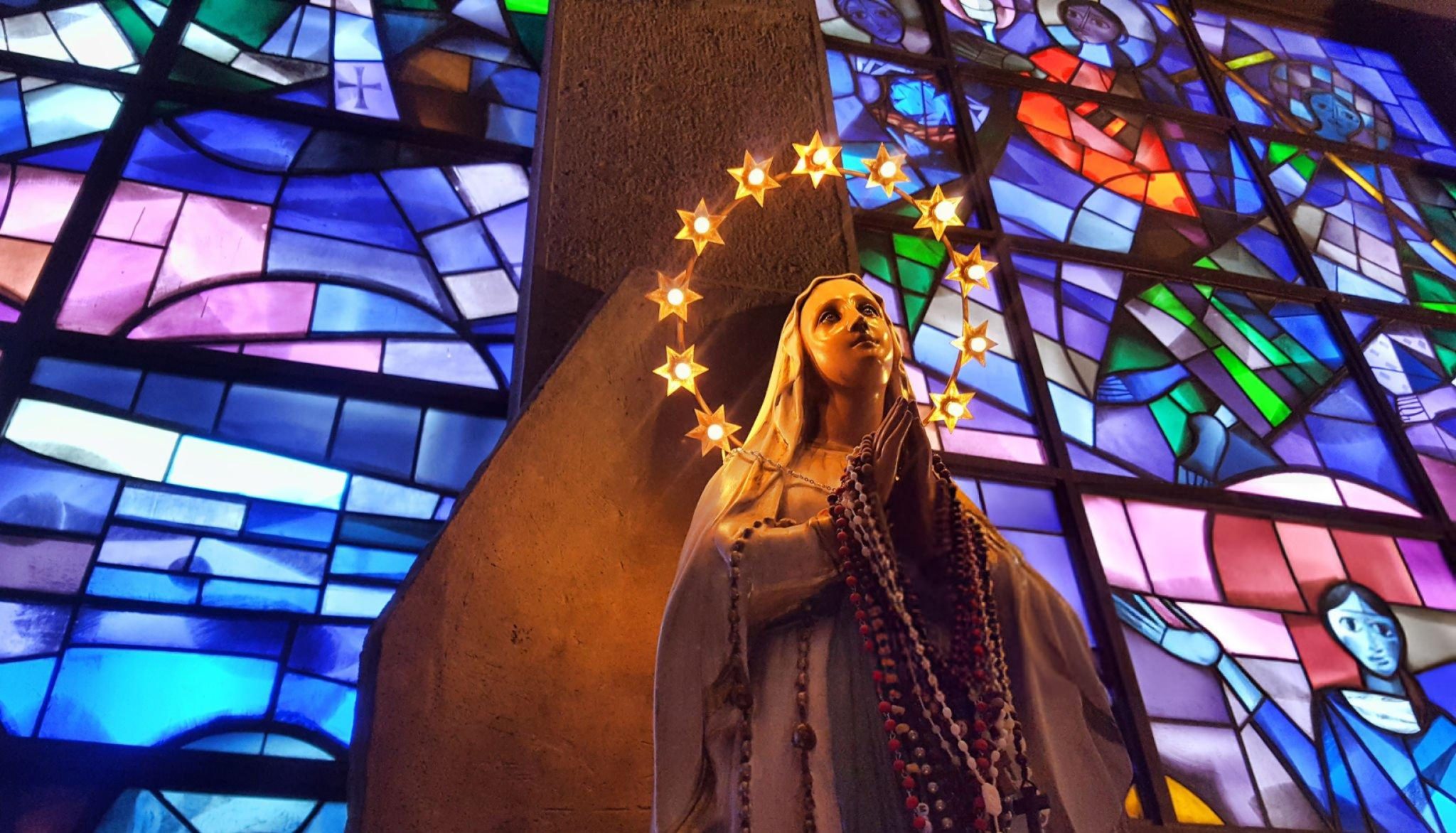Growing up as a Muslim in the predominantly Catholic state of Rhineland-Palatinate in Germany, Mary was an unexpected yet constant presence in my life. As a young girl, I would walk to school past numerous images and statues of her, her serene face often smiling down on me, offering an unspoken connection in a community that, in many ways, was unfamiliar to my own faith. During Christmas time, I joined my classmates in singing Stille Nacht, heilige Nacht, unaware that my connection to Mary ran much deeper than just a festive ritual.
In Islam, Mary (known as Maryam in Arabic) is revered in a way that many outside the faith might not realise. After all, many non-Muslims are often surprised to learn of the importance of Mary in Islamic belief. As I once taught in a class on “the Muslim Mary,” most of my non-Muslim students had no idea that Mary holds such a central role in our religion. Yet, as I explained, Mary is not just a figure in Christianity; she is one of the most honoured women in Islam, and the Qur’an dedicates an entire chapter (19) to her.
For Muslims like me, Mary represents more than the mother of Jesus. She is a model of spiritual excellence, resilience, and piety. Her story, filled with struggle and uncertainty, offers a profound lesson in trusting God and maintaining hope even in the most difficult times. When I was young, Mary became a role model not just because of her role as Jesus’ mother but because of her unwavering faith and devotion to God. Her character embodied the virtues I sought to nurture within myself — compassion, courage, and trust in a higher power, even in the face of adversity.
As a young Muslim woman wearing the hijab, I often faced prejudice and stereotypes that sought to define me by my outward appearance. In those moments, I drew strength from Mary’s example. She, too, faced isolation and suspicion, but she remained steadfast. Her resilience encouraged me to persevere and find my own place in the world, despite the challenges I faced.
Over the years, as I continued to grow and build my family, I found new ways to connect with Mary. One of the most profound ways was through my daughters. I named one of them Maryam, the Arabic name for Mary, as a tribute to her extraordinary virtues. Naming my daughter after Mary was not just a gesture of respect; it was a hope that my child would grow to embody the same qualities of piety, humility, compassion, and courage that Mary exemplified.
In many parts of the Muslim world, Mary’s presence is visible and honoured. The mihrab — the wall in every mosque that points toward Mecca, where Muslims direct their prayers — is also the name of Mary’s private sanctuary room as mentioned in the Qur’an. This connection between Mary and the Islamic faith is not only symbolic but a real, tangible link between the two religions. I’ve taken my students to visit Mother Mary’s House (Meryem Ana Evi) in Turkey, a shared pilgrimage site where both Muslims and Christians gather to honour her. There, and at other sacred sites like the Hagia Sophia in Istanbul, Mary is venerated in ways that transcend religious boundaries.
Despite the similarities between the two faiths’ portrayals of Mary, I have never compromised my own Muslim beliefs or glossed over the theological differences between Islam and Christianity. For Christians, Mary is the mother of God, an essential figure in the doctrine of the Incarnation. For Muslims, Mary is the mother of Jesus, the Prophet Isa, who is regarded as fully human, not divine. These differences are significant, and I have learned to live with them, affirming the unresolvable theological tensions while appreciating the common ground we share in revering Mary.
In teaching my students about Mary, I hope they walked away with a deeper understanding of her spiritual legacy. We all agreed on her profound compassion, her purity, and her embodiment of hope — virtues that resonate across faiths and offer valuable lessons for us all.
As a Muslim, I believe that it is crucial for Christians and Muslims, who together make up more than half of the world’s population, to find common ground. By honouring Mary together, we can work towards greater mutual understanding and cooperation, fostering a sense of shared humanity and spiritual solidarity. Mary, in her universal symbolism, can be a beacon of hope, compassion, and reconciliation in a world that so desperately needs it.






